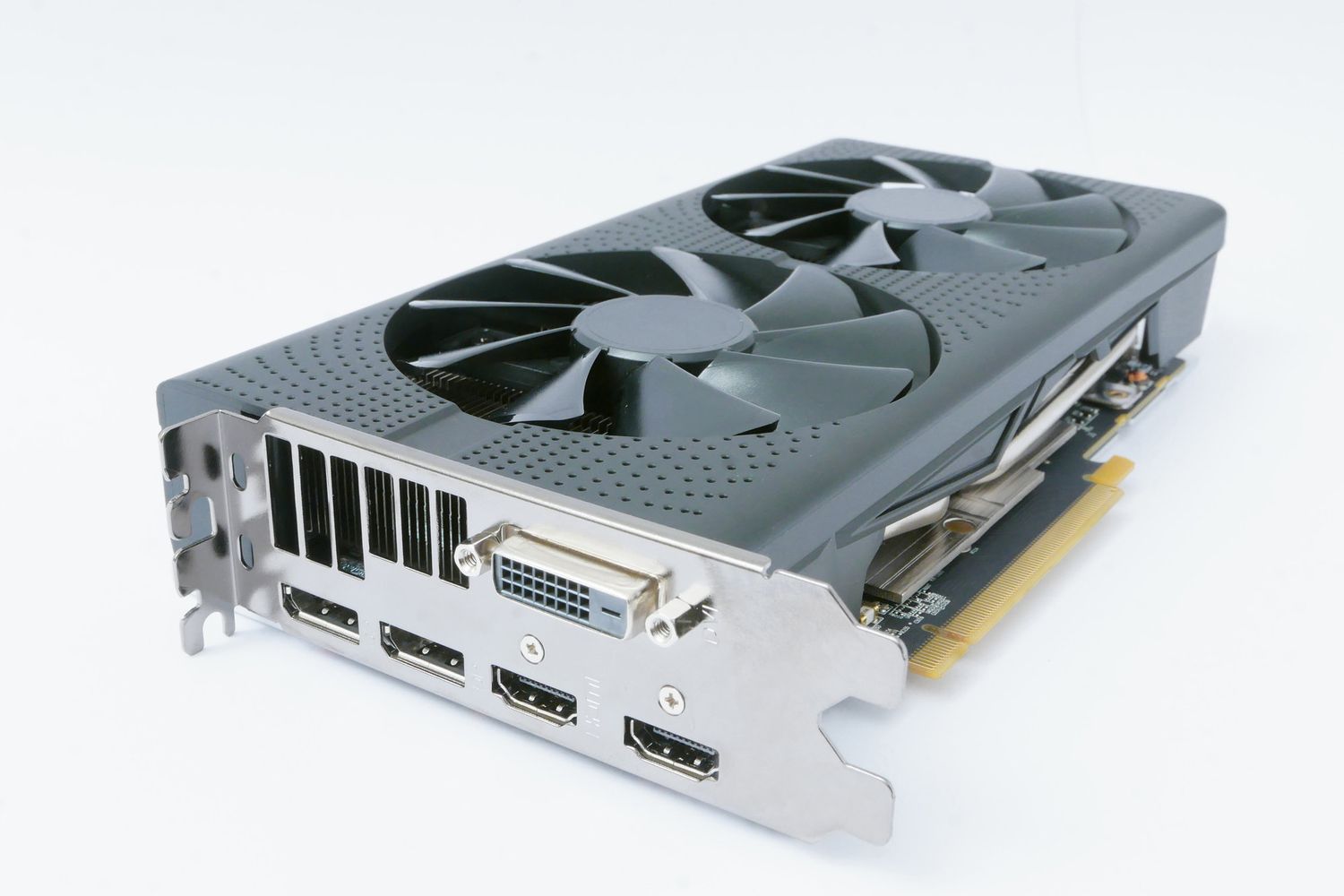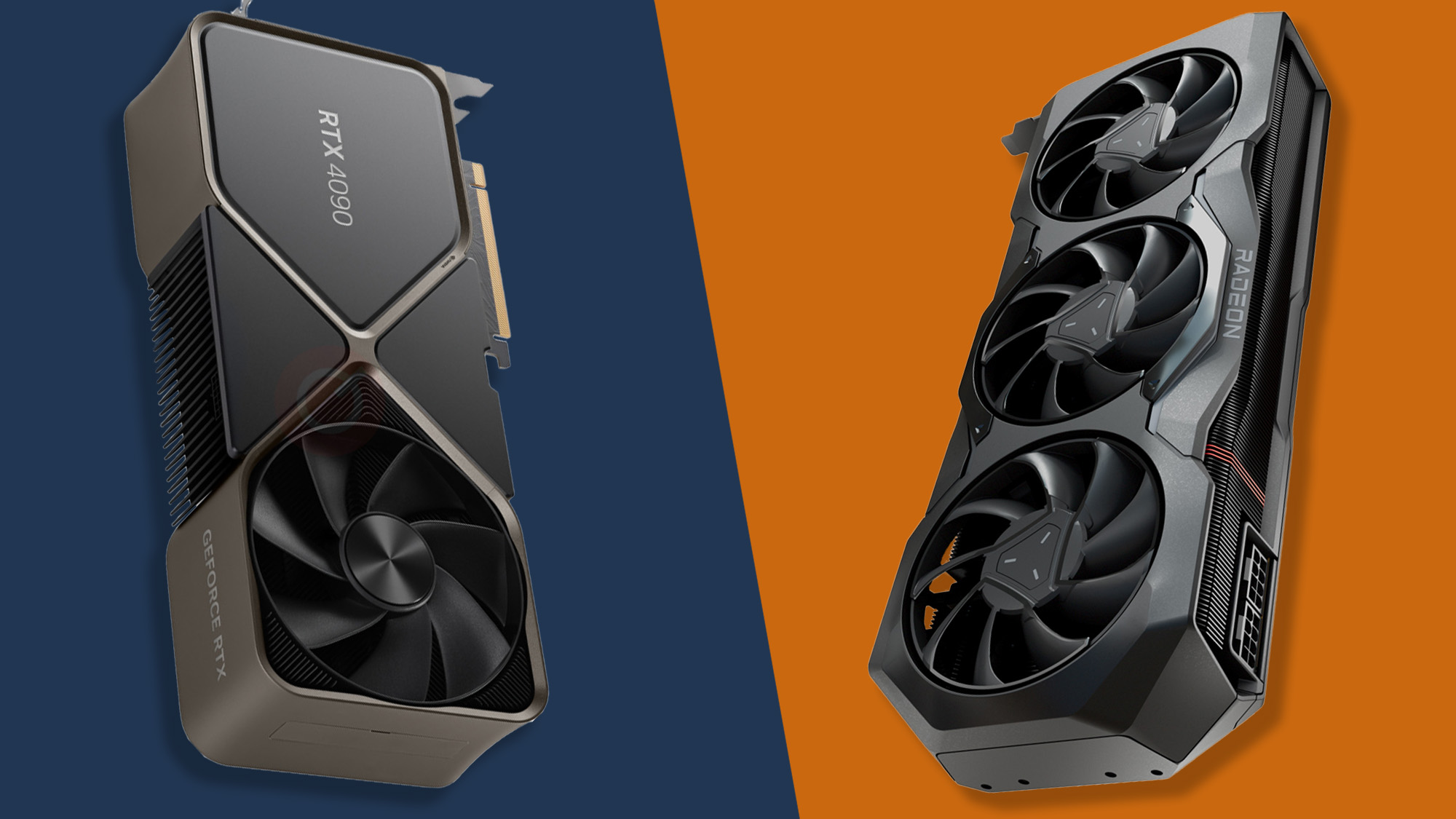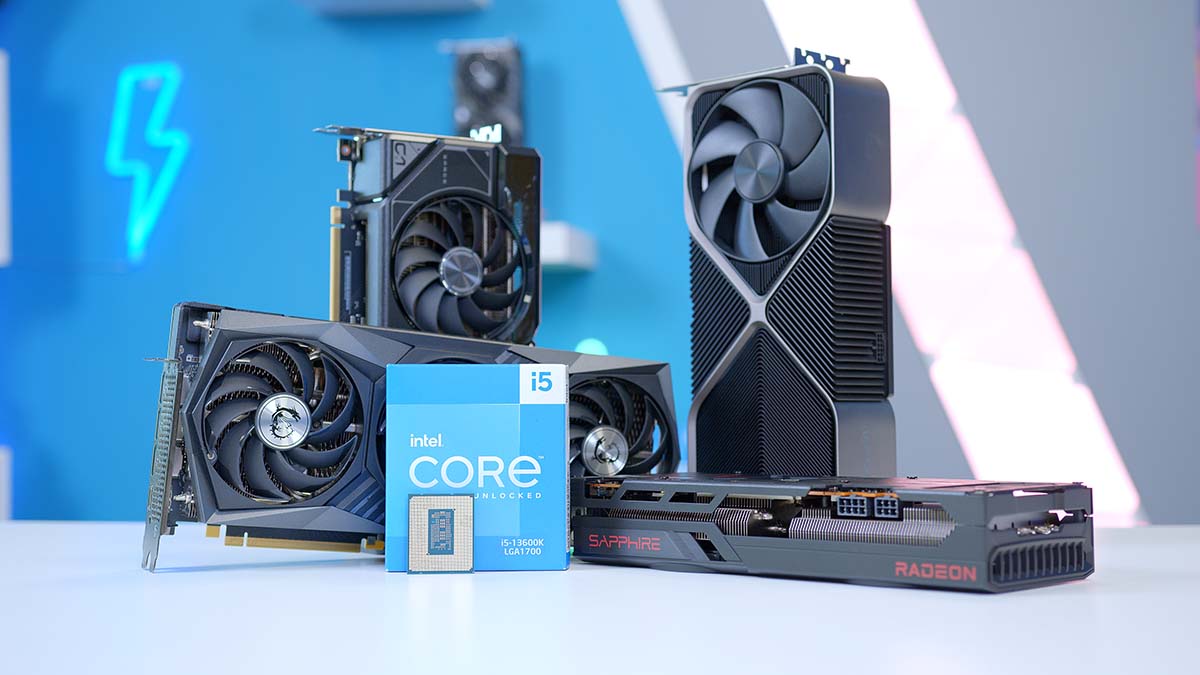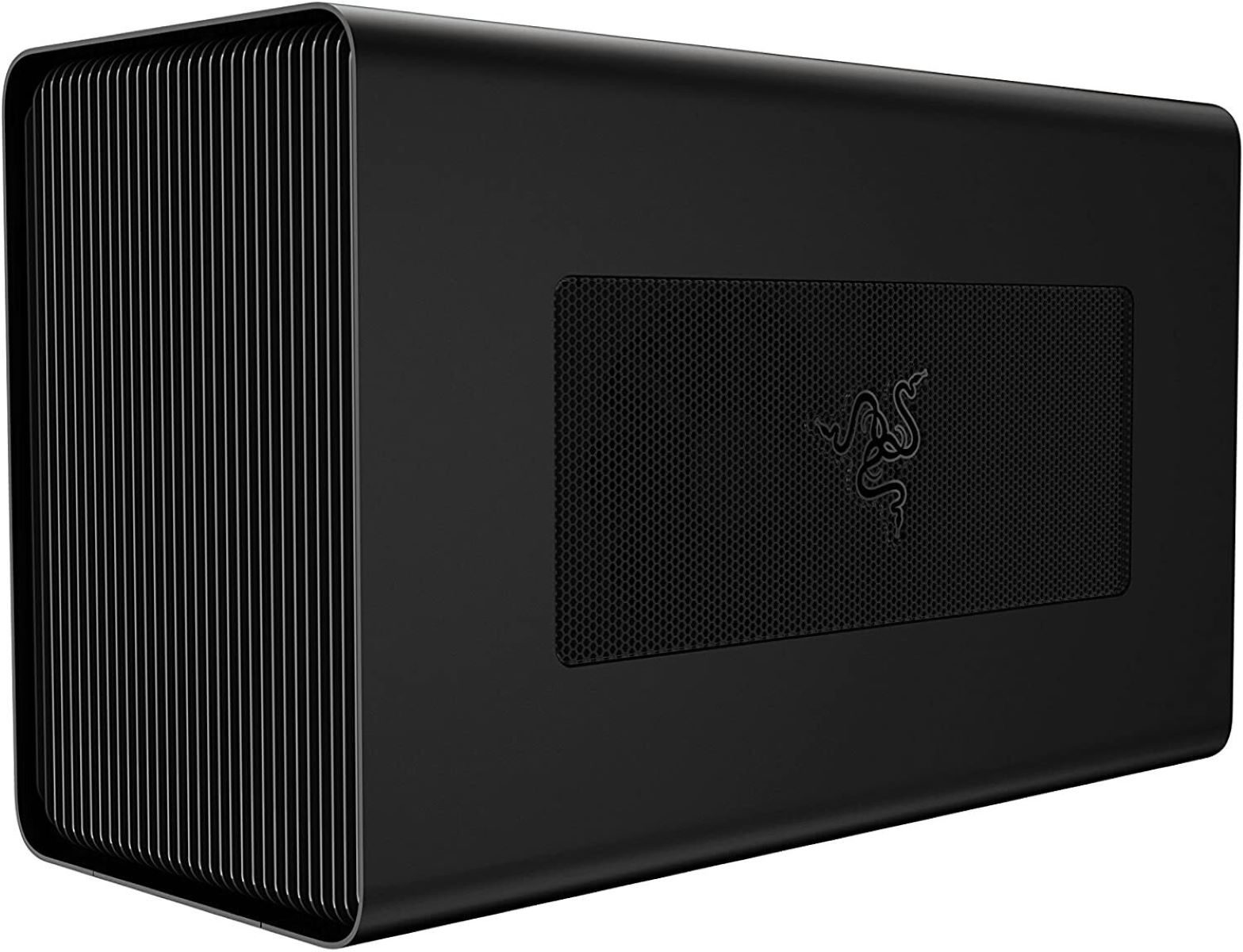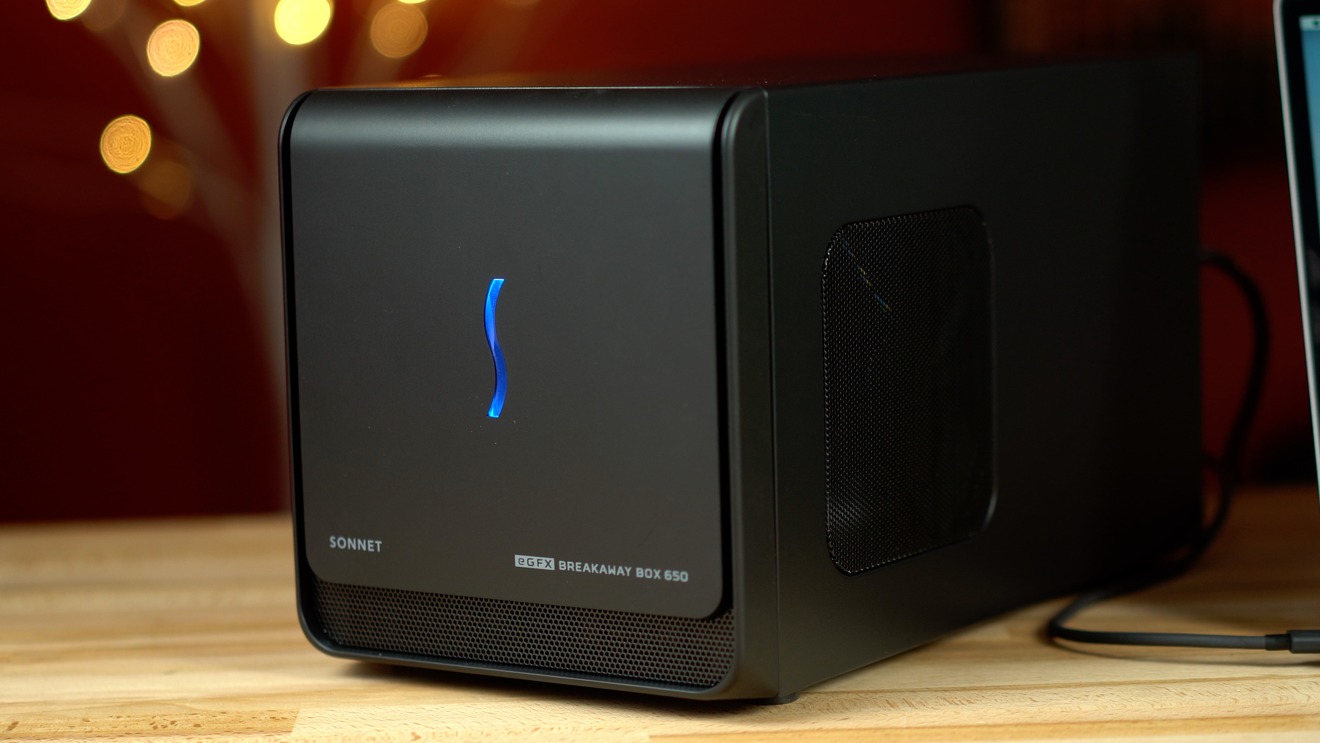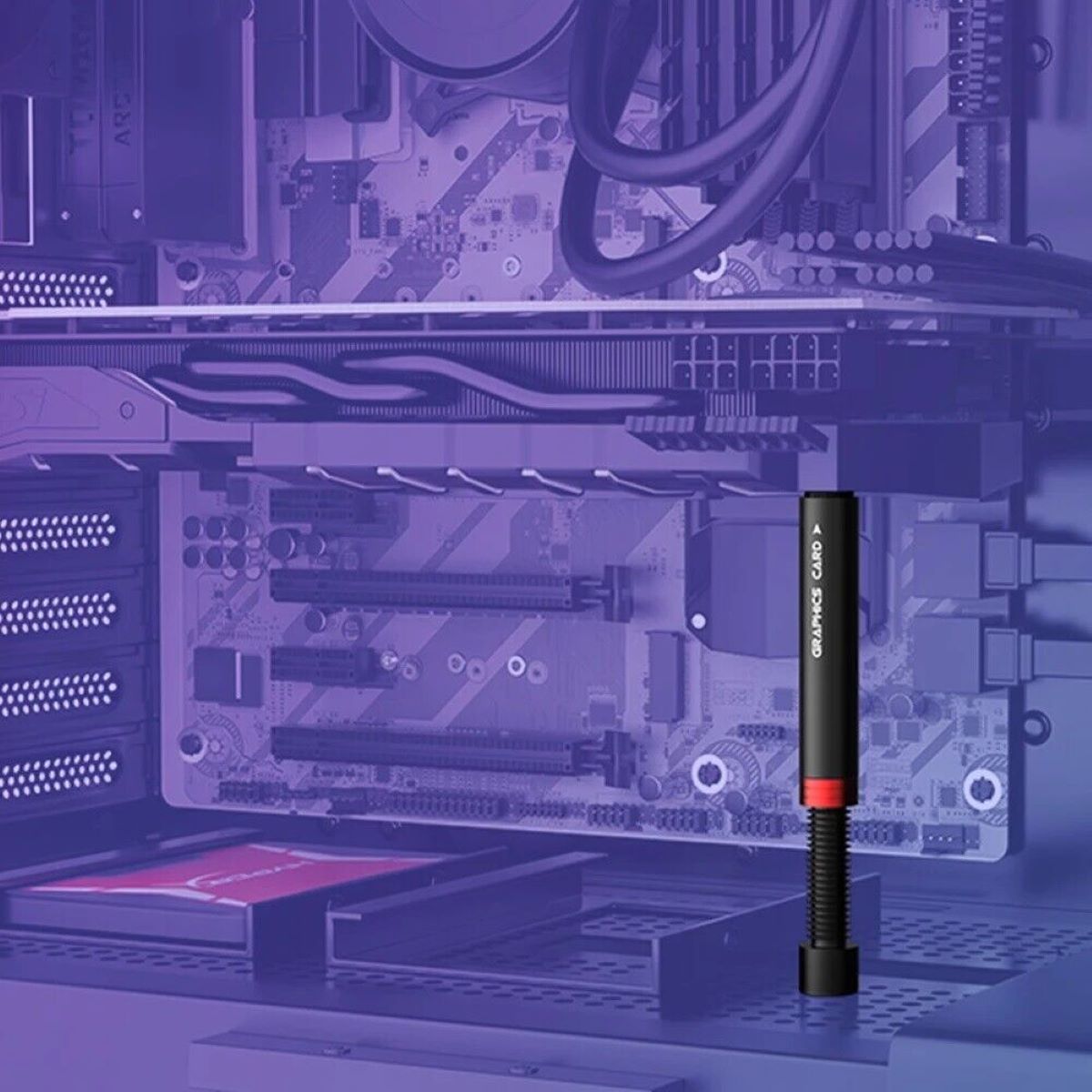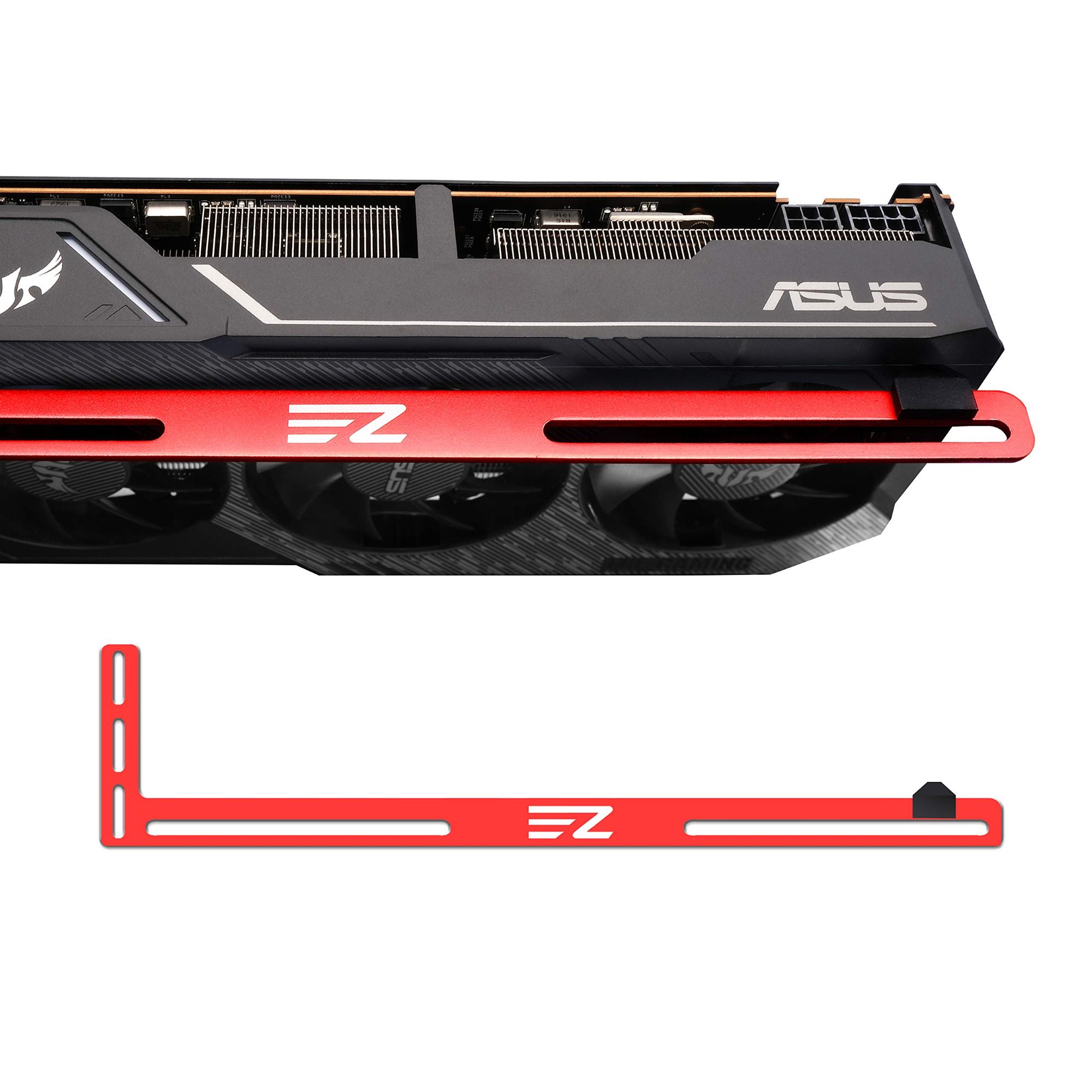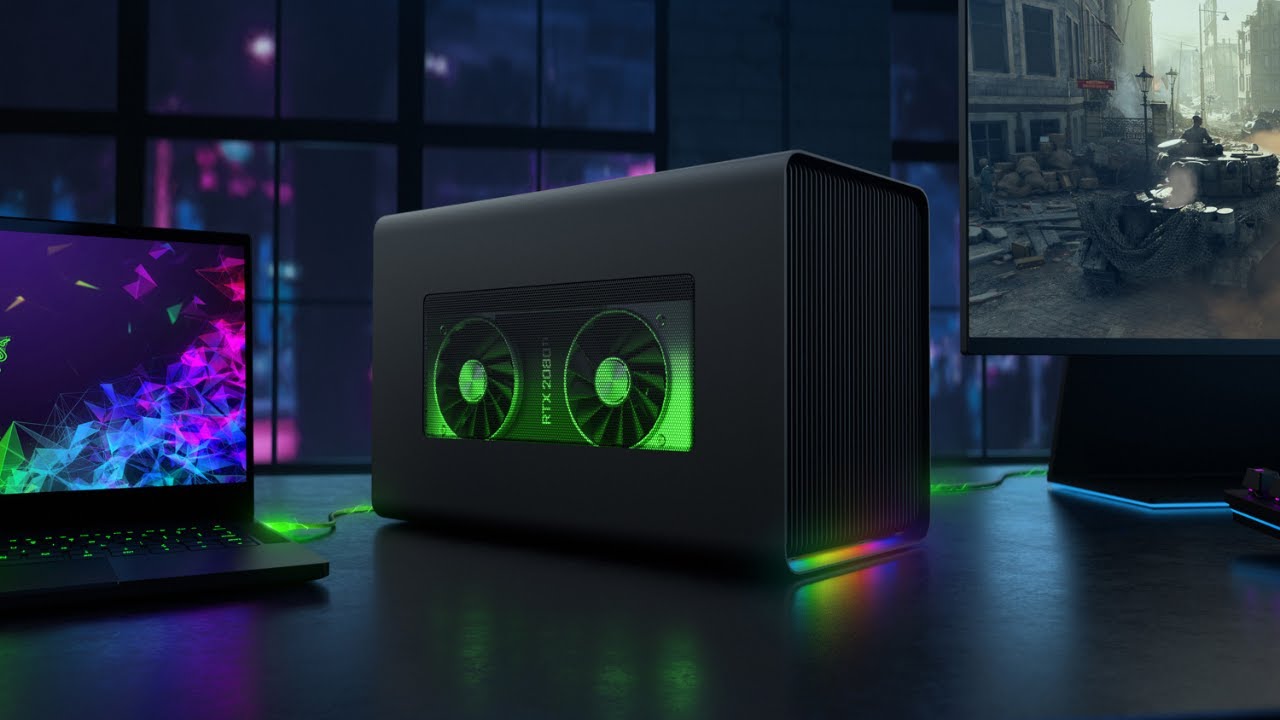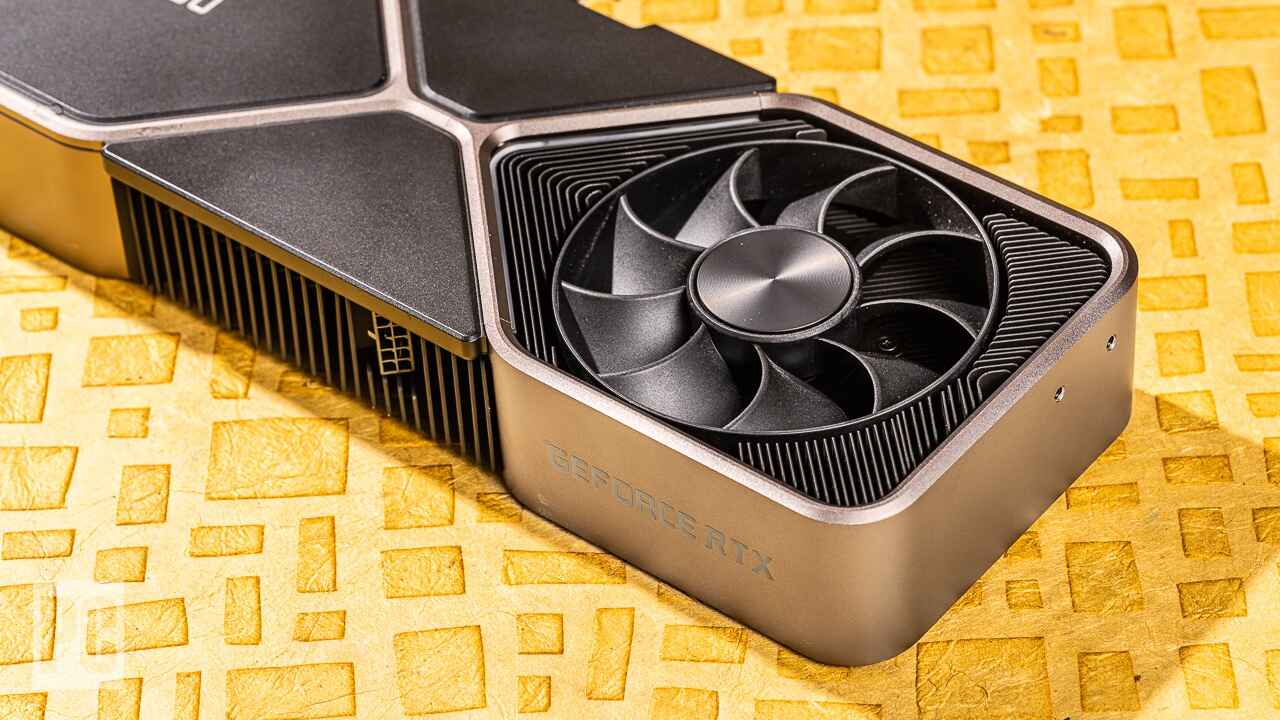Introduction
Welcome to the world of computer graphics and the fascinating role that graphics cards play in powering our digital experiences. In today’s technologically-driven age, computers have become an integral part of our lives, from gaming and video editing to 3D rendering and cryptocurrency mining. At the heart of these activities lies the graphics card, a crucial component that enables us to witness stunning visuals on our screens.
But what exactly is a graphics card? How does it work? And why is it so important in various applications? In this article, we will delve into the world of graphics cards and explore their significance in different fields.
A graphics card, also known as a GPU (Graphics Processing Unit), is a specialized piece of hardware designed to handle and accelerate the rendering of images, videos, and graphics on a computer. It is responsible for transforming numerical data into visual information that can be displayed on your monitor.
Unlike the central processing unit (CPU) that handles general computing tasks, the graphics card focuses primarily on graphical processing. By dedicating its resources to graphics-related calculations, it can perform these tasks much faster and more efficiently than a CPU alone.
Now that we have a basic understanding of what a graphics card is, let’s dive deeper into how it works. Understanding the inner mechanics of a graphics card will help us appreciate its role in different applications and guide us in making informed decisions when choosing the right one for our needs.
What is a Graphics Card?
A graphics card, also known as a GPU (Graphics Processing Unit), is a vital component of a computer system that is responsible for rendering and displaying visual information on a monitor. It is specifically designed to offload the graphical processing tasks from the CPU, allowing for faster and more efficient handling of complex graphics.
At its core, a graphics card consists of three main components: the graphics processing unit (GPU), video memory (VRAM), and cooling system. The GPU is the heart of the graphics card and is responsible for performing complex mathematical calculations required for rendering graphics. It consists of thousands of smaller processing units, called cores, which work in parallel to process multiple tasks simultaneously.
The VRAM, or video RAM, acts as the memory for the graphics card. It stores the visual data that needs to be displayed on the screen, such as textures, shaders, and frame buffers. The amount and type of VRAM can greatly impact the performance and capabilities of a graphics card.
To ensure that the GPU and VRAM remain cool during operation, graphics cards are equipped with a cooling system. This usually includes one or more fans and heat sinks, which dissipate the heat generated by the GPU and prevent overheating.
Graphics cards come in various form factors to cater to different system configurations, including dedicated graphics cards that are installed externally via a PCIe slot, and integrated graphics cards that are integrated into the motherboard of a computer. Dedicated graphics cards are typically more powerful and suitable for demanding applications such as gaming and video editing, while integrated graphics cards are more suitable for everyday tasks and less demanding applications.
In recent years, graphics cards have witnessed significant advancements, with manufacturers continually pushing the boundaries of performance and capabilities. The latest graphics cards feature technologies such as ray tracing, which simulates the path of light in a 3D environment for more realistic and immersive visuals, and machine learning capabilities that accelerate tasks like image recognition and video encoding.
With their immense processing power and advanced features, graphics cards have revolutionized various fields such as gaming, video editing, 3D rendering, and even cryptocurrency mining. In the next sections, we will explore the specific roles that graphics cards play in these applications.
How Does a Graphics Card Work?
Understanding how a graphics card works involves unraveling the intricacies of its various components and the processes involved in rendering graphics. At the core of a graphics card lies the Graphics Processing Unit (GPU), which performs complex mathematical calculations to generate and manipulate visual data.
When a computer receives instructions to render graphics, these instructions are passed onto the GPU. The GPU then breaks down these instructions into smaller tasks called threads, and distributes these threads to multiple processing units known as cores. These cores work in parallel to perform calculations simultaneously, allowing for faster processing of graphics-related tasks.
The GPU is designed to handle a vast number of calculations simultaneously, making it more efficient than the Central Processing Unit (CPU) for graphical processing. By offloading these tasks from the CPU, the GPU frees up the CPU’s resources to handle other non-graphical tasks, resulting in improved overall system performance.
In addition to the GPU, another essential component of the graphics card is the Video Random Access Memory (VRAM). The VRAM acts as the dedicated memory for the graphics card and stores the visual data that needs to be rendered on the screen. This includes textures, shaders, frame buffers, and other graphical elements.
When the GPU needs to display an image on the monitor, it retrieves the necessary data from the VRAM and processes it. The processed data is then sent to the monitor through the appropriate cables, converting it into the images and videos that we see on the screen.
In order to ensure optimal performance and prevent overheating, graphics cards are equipped with a cooling system. This typically includes one or more fans and heat sinks that dissipate the heat generated by the GPU. The cooling system maintains the temperature of the graphics card within an acceptable range, allowing it to operate efficiently and prolonging its lifespan.
Modern graphics cards also employ various advanced technologies and features, such as parallel processing, hardware acceleration, and specialized algorithms. These technologies further enhance the performance and capabilities of graphics cards, enabling them to handle complex graphics rendering, real-time ray tracing, and other computationally intensive tasks.
In summary, a graphics card works by utilizing its Graphics Processing Unit (GPU) to process complex mathematical calculations related to graphics rendering. The GPU distributes these tasks to multiple processing units called cores, which work in parallel to perform the calculations simultaneously. The Visual Random Access Memory (VRAM) stores the visual data necessary for rendering, while the cooling system ensures that the graphics card does not overheat during operation.
The Role of a Graphics Card in Gaming
Gaming is one of the most demanding tasks a computer can handle, requiring powerful hardware to deliver immersive and visually stunning experiences. The graphics card plays a crucial role in gaming, as it is responsible for rendering and displaying the graphics, textures, and animations that bring virtual worlds to life.
When playing a game, the graphics card receives instructions from the game engine on how to render each frame. It takes these instructions and processes them using its Graphics Processing Unit (GPU). The GPU performs complex calculations to determine the positions, colors, and lighting effects of the various objects within the game world.
As the player moves through the game, the graphics card continuously renders and updates the visuals in real-time, ensuring a smooth and seamless gaming experience. It handles tasks such as rendering high-resolution textures, calculating realistic lighting and shadows, and simulating physics-based effects like explosions or fluid dynamics.
The performance of a graphics card directly impacts the quality and smoothness of gameplay. A more powerful graphics card will be able to render complex scenes at higher resolutions, with greater detail and smoother frame rates, resulting in a more immersive and visually appealing gaming experience.
Graphics cards designed for gaming often come equipped with features such as overclocking support, optimized drivers, and software suites that enhance the overall gaming performance. These features help users maximize their gaming experience, pushing the boundaries of visual fidelity and unlocking higher frame rates.
Furthermore, modern gaming has seen the emergence of technologies such as real-time ray tracing and DLSS (Deep Learning Super Sampling), which further amplify the importance of a high-performance graphics card. Real-time ray tracing allows for more realistic lighting and reflections, creating more lifelike virtual environments. DLSS leverages artificial intelligence to upscale lower-resolution images to higher resolutions, reducing the strain on the graphics card while maintaining visual quality.
Overall, the graphics card is an essential component for gamers, as it directly impacts the quality, performance, and visual fidelity of games. Choosing a graphics card that matches the requirements of the games being played ensures a smooth and immersive gaming experience, allowing players to fully enjoy the virtual worlds they explore.
The Role of a Graphics Card in Video Editing
Video editing is a resource-intensive task that requires powerful hardware to handle the processing and manipulation of high-resolution video footage. The graphics card plays a crucial role in video editing by accelerating the rendering, playback, and effects processing, resulting in faster and more efficient editing workflows.
When editing a video, the graphics card comes into play during several stages of the process. First, it aids in the smooth playback of video files, allowing editors to view the footage in real-time without lag or stuttering. This is especially important when working with high-resolution video formats, which can be taxing on the computer’s resources.
In addition to playback, the graphics card accelerates the rendering of video effects and transitions. Popular video editing software often employs GPU-accelerated rendering techniques, which offload the processing of effects and transitions from the CPU to the graphics card. This results in faster rendering times, allowing editors to make adjustments and see the results in near real-time.
Furthermore, graphics cards with a large amount of Video Random Access Memory (VRAM) can handle the caching and processing of large video files more efficiently. This enables smooth playback and faster scrubbing through the timeline, ensuring a seamless editing experience.
Graphics cards also play a vital role in supporting color grading and color correction workflows. Many professional video editing software applications utilize GPU acceleration for real-time color grading, enabling editors to make adjustments and see the immediate impact on the visual aesthetics of their footage.
Another noteworthy aspect of video editing is the utilization of GPU-accelerated video encoding. Graphics cards with built-in video encoders can significantly speed up the process of exporting finished videos in various formats. This allows editors to save time and have faster turnaround times for their projects.
It is worth mentioning that the performance and capabilities of the graphics card used in video editing can vary depending on the video editing software being utilized. Some software applications may have specific requirements or support for certain GPU architectures, so it is important to research and choose a graphics card that is compatible and optimized for the chosen video editing software.
In summary, the role of a graphics card in video editing is crucial for enabling smooth playback, accelerating rendering of effects, transitions, and color grading, as well as speeding up the video encoding process. A powerful graphics card can significantly enhance the efficiency and productivity of video editing workflows, allowing editors to work with high-resolution video footage and achieve professional-looking results.
The Role of a Graphics Card in 3D Rendering
3D rendering involves the creation of realistic and immersive visualizations, animations, and models. It is a computationally intensive task that requires powerful hardware, with the graphics card playing a vital role in delivering fast and accurate renders.
When it comes to 3D rendering, the graphics card’s Graphics Processing Unit (GPU) is the workhorse responsible for handling the complex calculations required to create and manipulate 3D objects. The GPU performs operations such as calculating lighting, shadows, reflections, textures, and other visual elements, while also managing the rendering of multiple frames in real-time.
One of the key advantages of a graphics card in 3D rendering is its ability to perform parallel processing. The GPU of a graphics card contains numerous cores, each capable of executing multiple tasks simultaneously. This parallel processing capability allows 3D rendering software to distribute rendering tasks to different cores, resulting in significantly faster render times compared to using just the Central Processing Unit (CPU) alone.
The VRAM (Video Random Access Memory) of the graphics card is also crucial in 3D rendering. It acts as the dedicated memory for storing and accessing the vast amounts of data required for rendering 3D scenes, such as textures, materials, and geometry information. The larger the VRAM capacity, the more complex and detailed scenes can be rendered without running into memory limitations.
In addition to real-time rendering, graphics cards also play a significant role in offline or batch rendering. Graphics cards with advanced features, such as NVIDIA’s CUDA or AMD’s OpenCL, can offload some of the rendering computations from the CPU, increasing overall rendering performance and reducing the time required to complete complex renders.
Moreover, many specialized 3D rendering software applications, such as Autodesk Maya, Blender, or Cinema 4D, are designed to leverage the power of modern graphics cards. These programs utilize the GPU’s parallel processing capabilities and advanced shading techniques to create stunning visuals, realistic animations, and complex simulations.
As technology advances, graphics cards continue to evolve to meet the demands of the ever-growing complexity of 3D rendering. Features such as hardware ray tracing, which accurately simulates the behavior of light in a scene, contribute to more realistic and immersive renders. Graphics cards with specialized ray-tracing cores, like NVIDIA’s RTX series, can significantly speed up the rendering process and improve the quality of lighting and reflections in a scene.
In summary, the graphics card plays a vital role in 3D rendering by powering the calculations and computations required to create visually stunning and realistic scenes. The GPU’s parallel processing capabilities, combined with large VRAM capacities and specialized features like hardware ray tracing, enable faster renders and more immersive visual experiences in the realm of 3D rendering.
The Role of a Graphics Card in Cryptocurrency Mining
Cryptocurrency mining is the process of verifying and adding transactions to a blockchain, and it requires significant computational power. Graphics cards play a crucial role in cryptocurrency mining, as they are highly efficient in performing the necessary calculations and solving complex algorithms to mine digital currencies.
One of the main benefits of using graphics cards for cryptocurrency mining is their parallel processing capabilities. Graphics Processing Units (GPUs) are designed to handle multiple calculations simultaneously, making them ideal for the repetitive and highly parallel tasks involved in mining cryptocurrencies.
Cryptocurrency mining algorithms, such as the popular Proof-of-Work (PoW) algorithm used by Bitcoin and many other cryptocurrencies, require miners to solve complex mathematical problems. These problems are computationally intensive, and the faster a miner can solve them, the higher their chances of receiving a reward in the form of newly minted coins.
Graphics cards are capable of performing these calculations with great efficiency, significantly increasing the mining speed and overall profitability. The hundreds or even thousands of cores found in modern graphics cards allow for a high number of calculations to be performed simultaneously, resulting in faster hash rates and increased mining rewards.
Additionally, graphics cards with a larger Video Random Access Memory (VRAM) capacity are often preferred for cryptocurrency mining. The VRAM stores the data required for mining, such as the blockchain and transaction data, and having more VRAM allows for larger datasets to be processed efficiently.
Over the years, dedicated mining software has been developed to optimize the use of graphics cards in cryptocurrency mining. These software programs are specifically designed to leverage the parallel processing power of GPUs, allowing miners to maximize their hash rates and profitability.
It is important to note that not all cryptocurrencies can be efficiently mined using graphics cards. Some cryptocurrencies, such as Bitcoin, have transitioned to highly specialized mining hardware known as ASICs (Application-Specific Integrated Circuits), which are specifically designed for mining that specific cryptocurrency. However, many other cryptocurrencies, such as Ethereum, are still GPU-minable.
Graphics cards have played a significant role in the democratization of cryptocurrency mining. With relatively affordable and accessible hardware, individuals can participate in the mining process, contributing to the security and operation of blockchain networks.
As the cryptocurrency landscape continues to evolve, graphics cards are continually adapting to meet the demands of mining operations. Manufacturers are designing graphics cards with mining-specific features, such as higher hash rates and improved power efficiency, to meet the specific needs of cryptocurrency miners.
In summary, graphics cards are essential tools for cryptocurrency mining, providing the computational power needed to solve complex algorithms and mine digital currencies. The parallel processing capabilities and large VRAM capacities of graphics cards allow for faster and more efficient mining, contributing to the security and operation of blockchain networks.
Factors to Consider When Choosing a Graphics Card
When it comes to choosing a graphics card, there are several factors to consider to ensure that you select the right one for your needs. Whether you’re a gamer, a video editor, or a 3D rendering enthusiast, here are some key factors to keep in mind:
- Performance: The performance of a graphics card directly impacts its ability to handle demanding tasks. Consider factors such as the number of cores, clock speed, memory capacity, and memory bandwidth. A higher-performing graphics card will yield smoother gameplay, faster video rendering, and quicker 3D rendering times.
- Compatibility: Make sure the graphics card is compatible with your system’s motherboard and power supply. Consider the PCIe slot compatibility, physical size, and power requirements of the graphics card to ensure it will fit and operate correctly within your computer.
- Budget: Set a budget for your graphics card purchase. Graphics cards come in various price ranges, so determine what you are willing to spend and look for options that provide the best performance within your budget. Keep in mind that higher-end graphics cards typically offer more power and performance, but they come with a higher price tag.
- Use Case: Consider the specific applications or tasks you will be using the graphics card for. Different use cases, such as gaming, video editing, or 3D rendering, may have different requirements. Research the recommended specifications for your desired applications and choose a graphics card that meets or exceeds those requirements.
- Resolution and Refresh Rate: If you are a gamer or working with high-resolution content, consider the resolution and refresh rate of your display. Higher resolutions and faster refresh rates require more graphics processing power. Choose a graphics card that can handle the specific resolution and refresh rate you desire for optimal performance.
- Manufacturer and Brand: Consider the reputation and reliability of the graphics card manufacturer and brand. Look for trusted brands known for producing reliable and high-quality graphics cards. Read reviews and gather feedback from other users to ensure you make an informed decision.
- Future Upgradeability: Think about your future plans and whether you may want to upgrade your graphics card down the line. If you anticipate needing more power or performance in the future, consider a graphics card that offers room for future upgrades.
Remember that choosing the right graphics card involves finding a balance between your needs, budget, and the available options in the market. Research, compare different models, and read reviews to make an informed decision that meets your specific requirements.
Conclusion
Graphics cards play an integral role in today’s computing landscape, powering various tasks ranging from gaming and video editing to 3D rendering and cryptocurrency mining. Understanding the importance and factors involved in choosing the right graphics card is essential for maximizing performance and achieving the desired results in these applications.
In gaming, a powerful graphics card is crucial for delivering immersive and visually stunning experiences. The parallel processing and advanced features of graphics cards enable smooth gameplay, realistic graphics, and faster rendering of game environments.
For video editing, the graphics card accelerates rendering, playback, and effects processing, leading to faster editing workflows and smoother timeline scrubbing. The large VRAM capacity and GPU acceleration capabilities greatly enhance the efficiency and productivity of video editing tasks.
In 3D rendering, graphics cards excel at performing complex calculations required for creating realistic visualizations and animations. The parallel processing power of GPUs, along with features like ray tracing, significantly speeds up rendering times and enhances the quality of rendered scenes.
Moreover, graphics cards have become indispensable in the world of cryptocurrency mining, offering efficient and powerful processing for solving complex algorithms. The parallel computing capabilities and large VRAM capacities make graphics cards highly desirable for miners seeking to maximize their mining performance.
When selecting a graphics card, factors such as performance, compatibility, budget, use case, resolution, and future upgradeability should be considered. It is crucial to research different models, compare specifications, and read user reviews to make an informed decision that aligns with your specific needs and budget.
In conclusion, graphics cards have revolutionized the way we experience gaming, video editing, 3D rendering, and cryptocurrency mining. Their role in powering these applications cannot be overstated. By understanding the purpose of a graphics card and considering the relevant factors, you can make an informed choice that enhances your computing experience and unlocks the full potential of your system.







